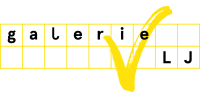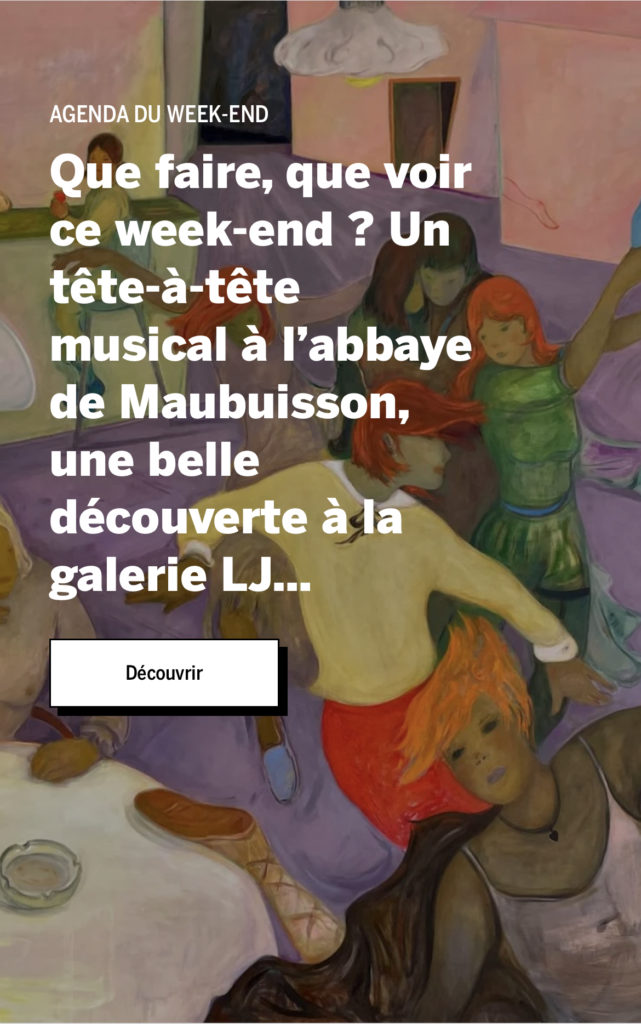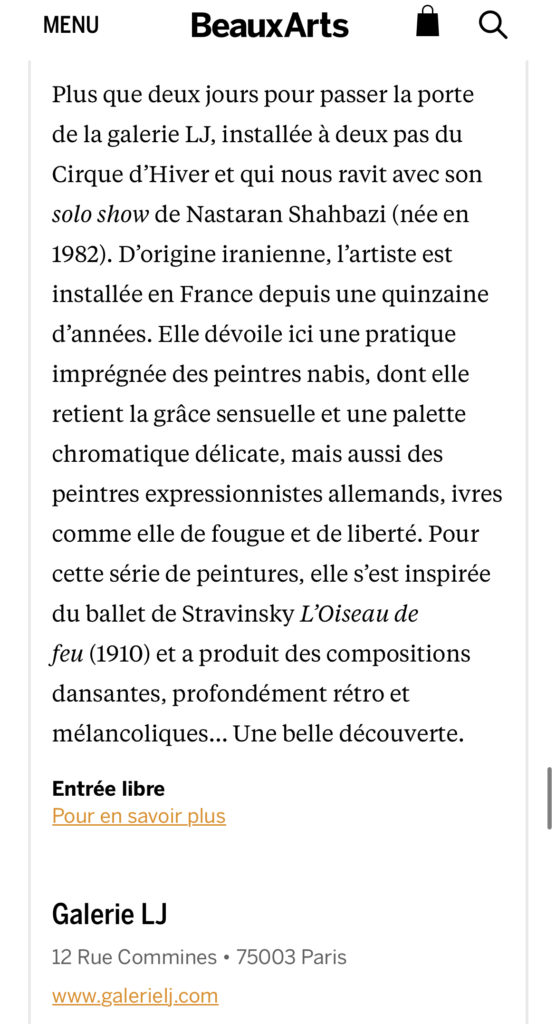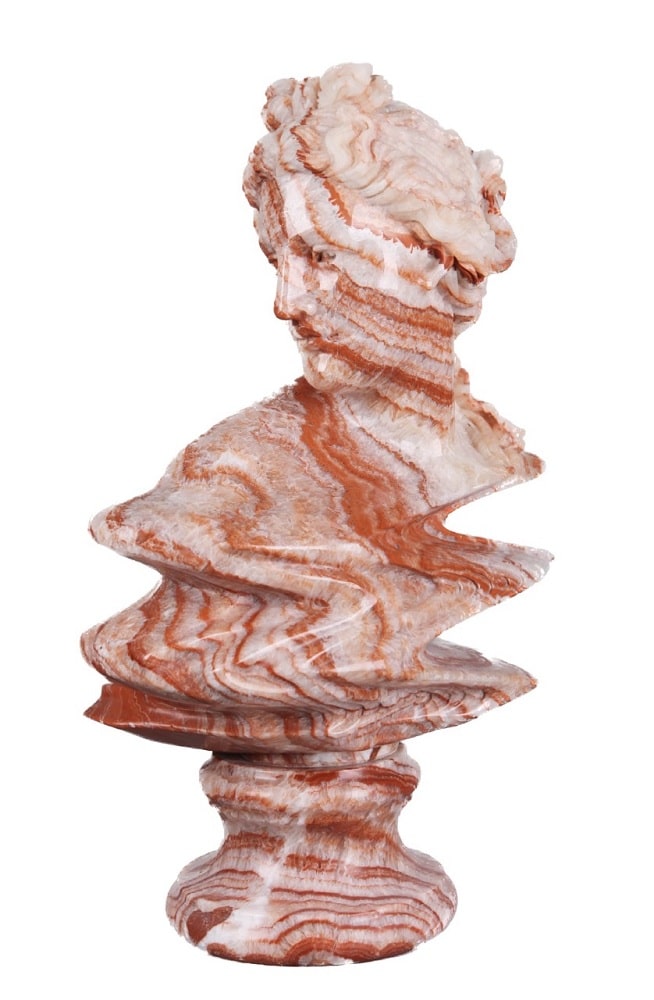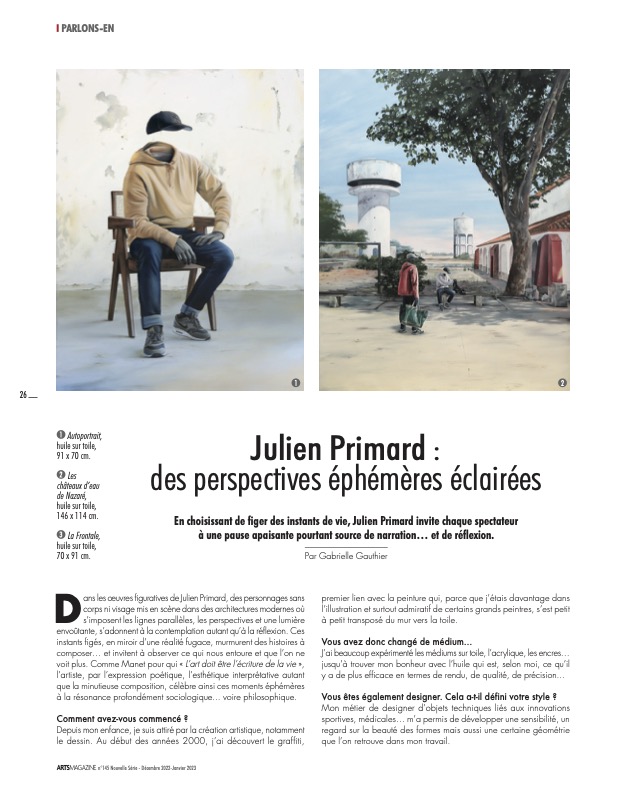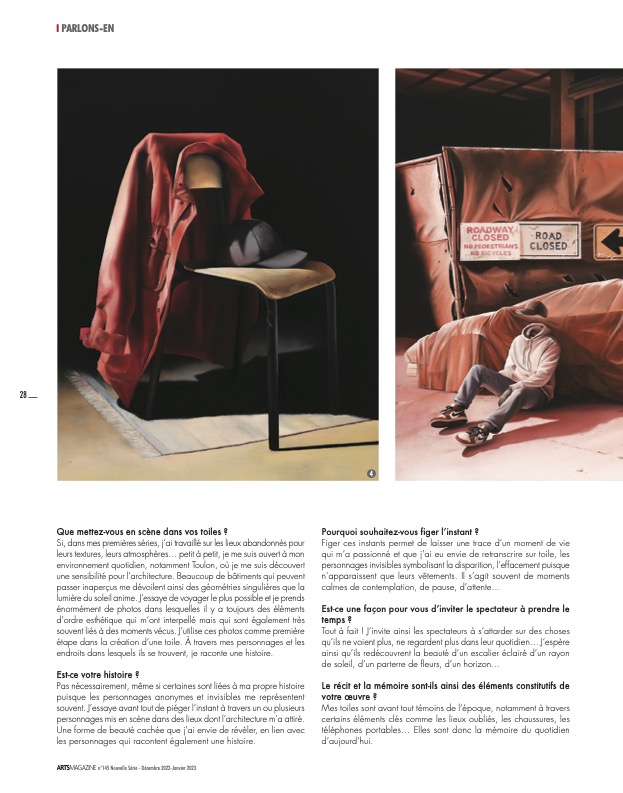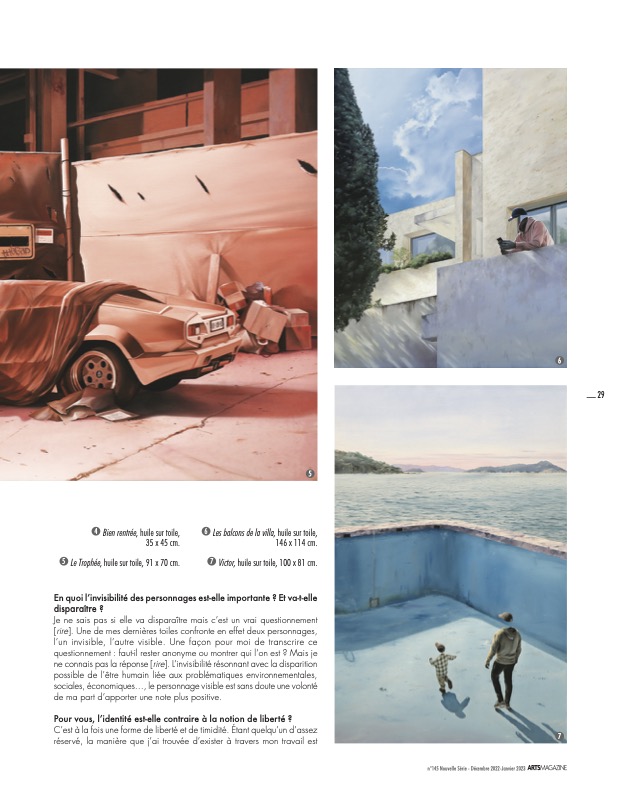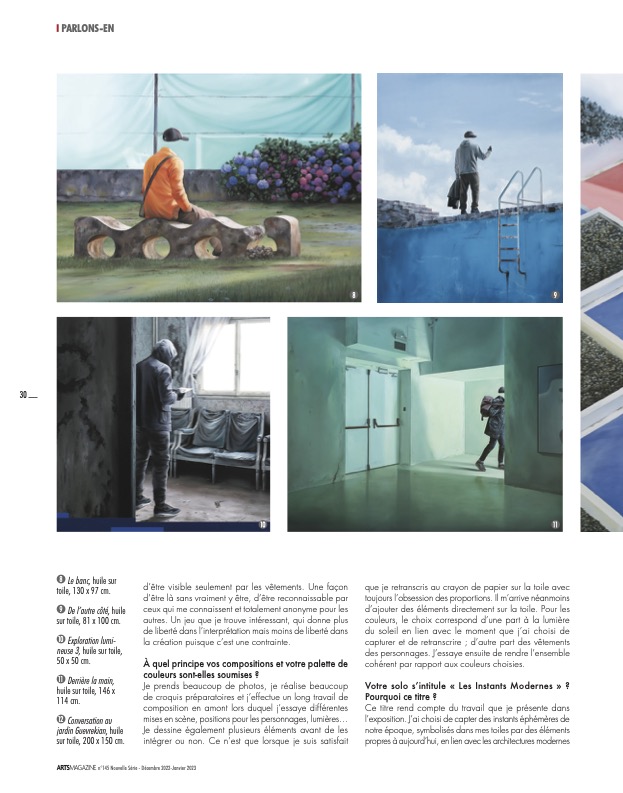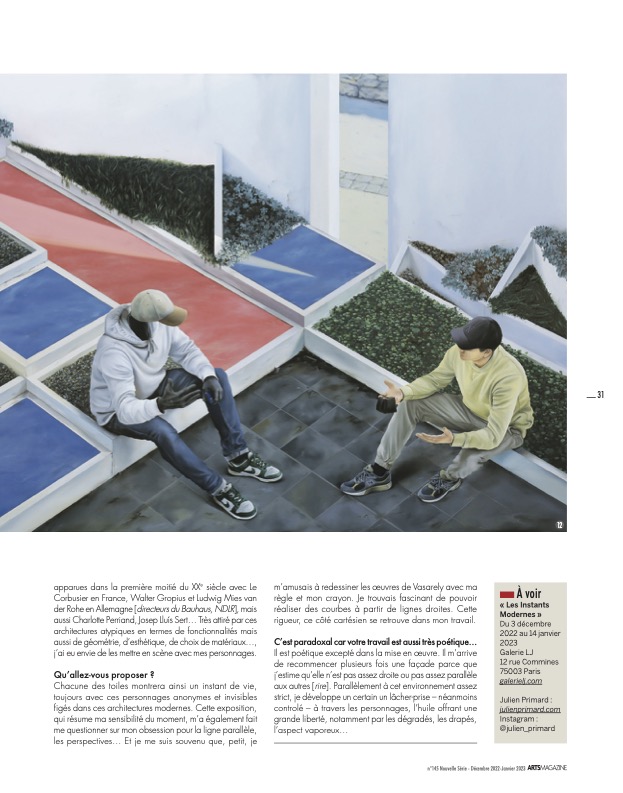Rithika Merchant in Korean online magazine Hankyung for KIAF art fair
Kiaf 2023 하이라이트- 갤러리 LJ의 리티카 머션트
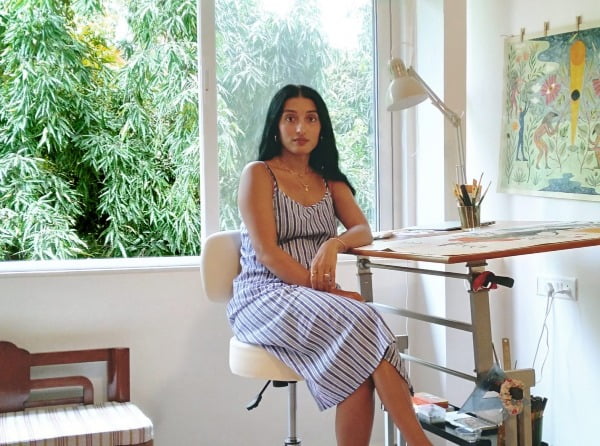
인도 뭄바이에서 1986년 태어난 리티카 머션트(Rithika Merchant). 그는 10년 이상 세계를 떠돌며 살았다. 뉴욕 파슨스스쿨에서 회화를 전공하고, 2008년 포르투갈, 그리스, 루마니아에서 여러 레지던시를 두루 거쳤다. 바르셀로나에 1년 이상 정착한 뒤 뭄바이로 돌아간 건 2022년. 현재 뭄바이와 벨기에를 오가며 활동하는 그의 그림엔 다양한 문화와 종교, 신화, 전통적인 서사들이 담긴다.
초현실적이고 초자연적인 현상들을 그려낸 것같은 작품 속엔 (마치 우주선에서 내려다 봤을 법한) 낯설지 않은 지구와 대자연의 모티프가 담긴다. 인간을 닮은 어떤 존재들이 바다와 하늘을 탐험하거나 혜성이 쏟아지는 공간을 유영하기도 한다.
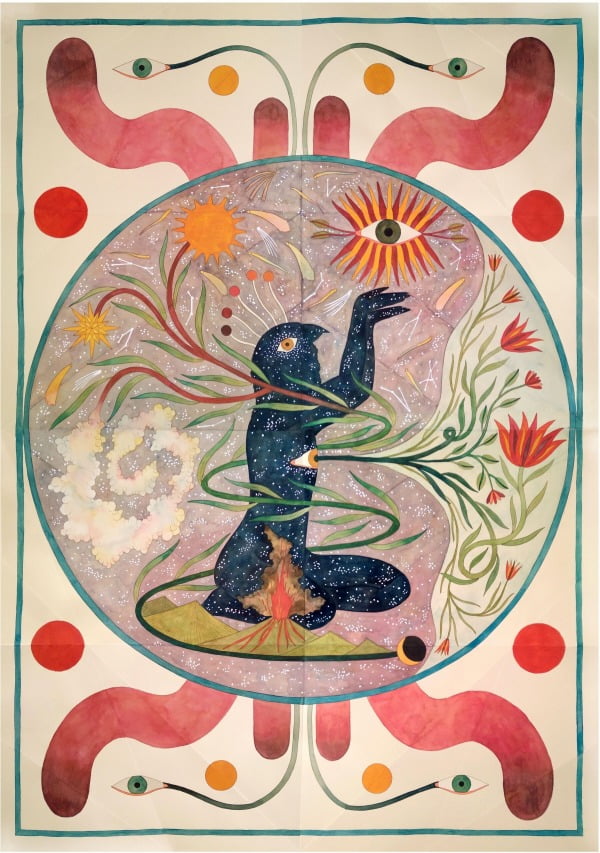
“저는 우주를 하나로 보고 ‘홀로세’와 ‘인류세’ 이후 일어날 일에 대한 해답을 찾고 있습니다. 하늘을 집중적으로 탐구하죠. <새로운 세계의 탄생(2020)>에선 인간의 대리인인 어떤 존재들이 우리가 지구에 무슨 짓을 했는 지 깨닫고 하늘, 물, 땅을 헤맵니다. <별똥별로의 귀환(2021)>에선 별에서 답을 찾는 원초적인 시간을 다룹니다. <불사조 태양의 축제(2022)>에선 이 존재들이 해결책을 찾기 위해 과거를 들여다보고, 최근 작품인 <테라포메이션 시리즈(2022-2023)>에선 이들이 지구를 떠나 유토피아, 새로운 세상을 재건합니다.”
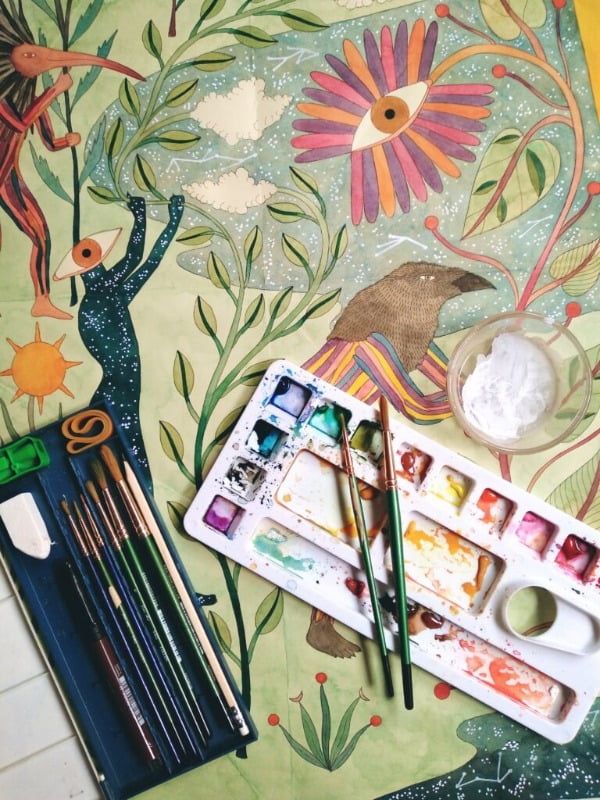
그는 보통 종이에 과슈, 수채, 잉크 작업을 한다. 수채는 덧칠하거나 되돌리기 어려워 오히려 작업을 하는 매 순간 집중하고 긴장해야 한다고. 작가는 수채가 갖는 반투명하고 빛바랜듯한 표현에 매력을 느낀다.
“저는 상징적 의미가 강한 것들, 스토리텔링의 요소가 있는 작업에 끌립니다. 문학적, 신화적, 시각적 요소를 기반으로 작은 디테일들에서 큰 감흥을 얻지요.”
머션트의 작품 안엔 17세기 보태니컬 드로잉이나 인도의 전통 문양 칼라마카리, 무갈회화, 칼리가트 민속 예술, 아르데코나 아르누보의 건축 요소와 지도의 이미지들이 혼재한다. 종이를 접어 그림을 그려넣어 마치 퀼트처럼 완성하거나 하나의 기하학적 오브제처럼 표현하기도 한다. 최근엔 콜라주 작품도 시작했다. 작품 속엔 독특한 문양과 화려함, 그만의 서사와 메시지가 담긴다. 2018년과 2020년에 그는 프랑스 패션 레이블 끌로에(Chloé)와 작업했고, 그가 참여한 컬렉션은 보그 인디아와 보그 월드는 물론 세계 각국의 예술재단 수상으로 이어졌다.

“눈, 태양, 달, 식물 이미지와 같이 문화적으로 특수하지 않고 보편적으로 인식할 수 있는 상징에 매력을 느낍니다. 이런 것들을 기반으로 저만의 기호와 어휘를 만들어내지요. 작품에 등장하는 인물 역시 의도적으로 인종, 성별, 민족을 배제합니다. 관객의 국적과 거주지 등에 상관없이 누구나 작품 속에 들어가 새로운 세계로 이동하는 느낌을 받길 바라기 때문입니다. 예술가로서 저는 세상을 만들어가고 있다고 생각합니다. 아이디어는 무한한 가능성과 창조의 길을 가지니까요. 앞으로 몰입도가 높은 대형 그림도 그릴 계획입니다.” 김보라 기자
